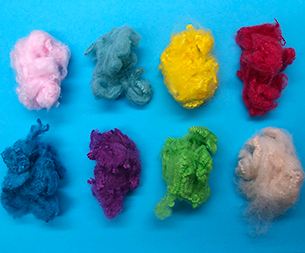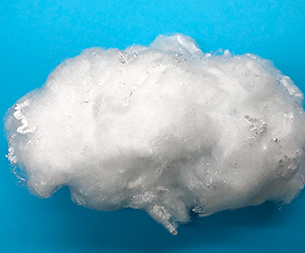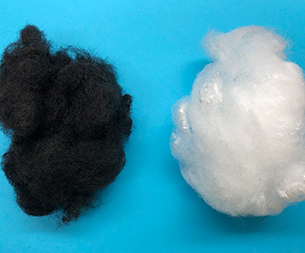Polypropylene staple fiber is mainly used acupuncture carpet, automotive interior, non-woven fabrics, ropes, decorative materials, medical supplies, and so on. short fiber known as staple fibers. Chemical fibers or fiber bundles are pulled off cut into equivalent lengths of fibers natural fibers. Also be used natural fibers such as asbestos, and whiskers. Staple boundaries, the length is generally 35 ~ 150mm. According to specifications can be divided into natural fiber cotton, wool, carpet type and other long staple fiber type. They may be pure spinning different proportions and may be natural fibers or other fibers blended yarn made of fabric and felt. For example, a general purpose grade bituminous carbon fiber dimensional slices into a 150mm long with a diameter of 15 m, strength of 800 MPa or, modulus carbon fiber 41GPa, the (intensity 200MPa, diameter 14μm length 70mm) and the phenol-based carbon fibers 8: mixing ratio 2 was prepared stable reeling sliver. Woven into a fabric of various shapes cut into short fibers or a composite material such as cement, aluminum reinforcement.
Large-scale production of polypropylene staple fiber problems and solutions are:
1. Initial production will have more defects occur, which can gradually be solved by adjusting the process parameters of the cooling ring hair,
2. The accessories can not be added all at once, while spinning before engaging blend resolved.
3. Testing index polypropylene staple fiber from the initial production point of view, the elongation at break of the modified fiber is too large, low strength, which is caused due to the modifying components added is also related to the spinning process is not reasonable, breaking elongation too much effect on yarn quality, it should also be careful regulation of the technological aspects of spinning.
4. From the spinning process point of view, there is no tangles cylinder, carding difficulties and flower-traffic congestion and other problems between, indicating the number of crimps polypropylene staple fiber, anti-static and other indicators are reasonable. Further from the angle spinning and after processing, using lower than conventional spinning spinning oil content or solely for eliminating static electricity with which the angle of dyeability, antistatic appropriately reduced amount of the component added is also possible.
5. antistatic dyeable polypropylene fiber finishing process, boiling dyeing appropriate to avoid high temperature processing. End of dyed polypropylene staple fiber through a certain process that will greatly improve color fastness.
Hyland Taizhou Chemical Fiber Co., Ltd., formerly known as the city of Taizhou Chenguang synthetic fiber factory, founded in 1995, is a professional polypropylene staple fiber research and development, production and sales of technology-based chemical fiber enterprises. The company has more than 170 employees, covers an area of 54,000 square meters, plant 20,000 square meters, office building 5500 square meters. The company has five advanced automatic polypropylene staple fiber production lines, the design production capacity of 50,000 tons. The company established a perfect polypropylene staple fiber testing laboratories, has a full range of testing equipment fiber, polypropylene staple fiber have the ability to research and development of new products. As China's polypropylene staple fiber manufacturers, the company produces a full range of polypropylene staple fiber products, major applications include automotive, civil engineering, liquid filtration, home textiles and other industries. The company has passed ISO9001: 2015 international quality system certification.
- Jiangsu Haibang New Material Co.
- China's textile industry is at a
- Key Guide to Selecting Polypropy
- The impact of the Federal Reserv
- The core performance advantages
- China Textile Machinery: Driven
- The core applications of polypro
- Textile foreign trade has shifte
- How to choose the right polyprop
- Cross-border textile merchants a
- Markets
- Automotive Products
- Nonwoven Lining
- Geosynthetics
- Liquid Filtration
- Apparel and Textiles
- Hygiene Products
- Building and Construction
- Other Markets
- Contact Us
- Contact Haibang





